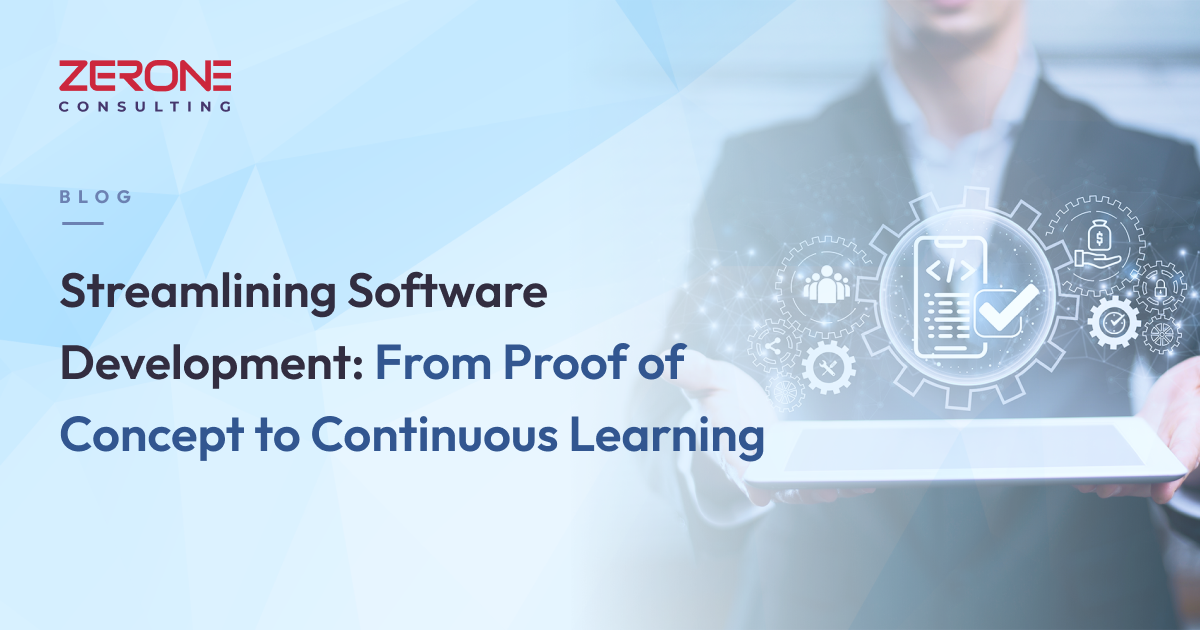Balancing Innovation and Security: A Strategic Approach to Mitigating Cybersecurity Risks in Application Development
In today's rapidly evolving digital landscape, businesses need to strike the optimal balance between innovation and security when aiming to outpace their competition. The deployment of cutting-edge technologies such as artificial intelligence, data analytics, and the Internet of Things (IoT) presents businesses with novel market opportunities, enhanced customer experiences, and avenues for revenue growth. However, these innovative endeavors often come with heightened cybersecurity risks. This article examines how industry leaders can confront these challenges while cultivating a secure enterprise environment.

Balancing Innovation and Security: A Cornerstone of Success
At a cursory glance, pursuing innovation and implementing cybersecurity measures may appear to be incompatible undertakings. Innovation often necessitates taking risks, whereas bolstering security seeks to minimize risks. Nonetheless, businesses are discovering methods to launch innovative digital initiatives while concurrently taking measures to protect data and other IT assets. The message is simple — innovate in a secure and prudent manner by allocating increased budgets and resources to safeguard both systems and innovative projects.
Cybersecurity Statistics: Comprehending the Expanding Threat Landscape
1. The Escalating Significance of Balancing Innovation and Security
A 2021 PwC survey stated that 55 per cent of CEOs believe that the pace of technological change poses a significant concern for their organizations. As businesses continue to innovate and embrace new technologies, balancing innovation with security becomes increasingly critical. A report by the University of Maryland states that a cyber-attack transpires every 39 seconds, further accentuating the need for organizations to adopt a proactive approach to cybersecurity.
2. The Ramifications of Data Breaches
Data breaches can inflict severe consequences on businesses. The global average cost of a data breach amounted to $4.24 million, according to the Ponemon Institute's 2021 Cost of a Data Breach study. This figure underscores the importance of investing in robust security measures to protect valuable data and maintain customer trust.
3. The Imperative of Employee Training
A 2020 IBM study found that 95 per cent of cybersecurity breaches result from human error. This statistic highlights the necessity of regular security training for employees to diminish the likelihood of breaches due to mistakes or lack of awareness.
4.The Advantages of DevSecOps
According to a 2020 GitLab survey, 76 per cent of organizations that implemented DevSecOps reported improvements in their security posture. This finding emphasizes the merit of integrating security into the DevOps process and automating security tasks to detect and address security issues more swiftly.
Strategies for Balancing Innovation and Security in Practice
Organizations across various sectors are devising ways to balance innovation and security in practice. These efforts aim to introduce new technologies, services, and business models while ensuring the protection of data, systems, and compliance with regulations.
-
Secure Deployment of New Online Services: Organizations are increasingly adopting cloud-based solutions to offer innovative services. To strike a balance between innovation and security, they share only essential core data with vendors and mandate that they adhere to industry standards for data privacy and security.
-
Integrating Security into New Applications: Organizations need to incorporate security requirements from the project's inception when developing new apps or digital services. By doing so, they ensure that user data is protected through measures like multi-factor authentication and data encryption.
-
Adopting an Experimental Approach to IT Innovation: Some organizations embrace an experimental approach by conducting small-scale technology trials while isolating them from external entities. This strategy helps mitigate potential vulnerabilities and in scaling up the experiment, ensuring the final product meets security and privacy standards.
-
Prioritizing Customer Experience and Data Protection: Enhancing the customer experience without compromising security is a priority for many organizations. By conducting usability studies, customer journey mapping, and implementing advanced security tools, they can create an improved customer experience while maintaining a high level of security.
Mitigating Cybersecurity Risks in Application Development
To balance risk with the pace of innovation, enterprises should adopt a proactive approach to cybersecurity during the application development process when experimenting with new technologies. Here are some steps organizations can take to mitigate cybersecurity risks:
a. Secure Development Lifecycle: Implement a secure development lifecycle (SDLC) that integrates security considerations and best practices from the initial design phase to the deployment and maintenance stages. By incorporating security early in the development process, organizations can identify and address potential vulnerabilities more efficiently.
b. Regular Security Training: Provide developers and other team members with regular training on the latest security best practices, emerging threats, and techniques for secure coding. Educating the development team about secure programming helps to reduce the likelihood of vulnerabilities due to human error or lack of awareness.
c. Security Testing and Assessments: Conduct regular security testing and assessments throughout the development process, including vulnerability scanning, penetration testing, and code reviews. This allows for the timely identification and remediation of potential security issues before they become more significant problems.
d. Automation and DevSecOps: Integrate security into the DevOps process (DevSecOps) by automating security checks, vulnerability scanning, and other security-related tasks. Automation help to identify and address security issues more quickly and consistently, reducing the potential for human error.
e. Collaboration with Security Teams: Encourage close collaboration between development and security teams to ensure that security is an integral part of the development process. This collaboration can help to identify potential risks and develop appropriate mitigation strategies more effectively.
f. Monitoring and Incident Response: Establish robust monitoring and incident response strategies for applications, including logging and real-time alerting. This enables the organization to detect and respond to security incidents quickly, minimizing potential damage.
g. Third-party Risk Management: When using third-party software, components, or services, ensure that these have undergone thorough security assessments and meet the organization's security requirements. Implement a vendor risk management process to evaluate and continuously monitor the security posture of third-party providers.
h. Secure by Design: Adopt the "Secure by Design" principle that emphasizes the importance of building security into applications from the beginning rather than treating it as an afterthought. This approach involves considering potential security risks and vulnerabilities during the design and architecture stages of application development, ensuring that security measures are integrated into the application's foundation. By incorporating security from the outset, organizations can proactively mitigate risks and create more resilient applications.
Conclusion
Balancing innovation and security in the digital age is crucial for businesses seeking to remain competitive while protecting their valuable systems and data. Industry leaders must proactively mitigate cybersecurity risks, ensuring a secure enterprise environment that fosters innovation. By implementing the practical steps mentioned above and learning from real-world examples, organizations can successfully balance innovation and security, establishing brand authority in their respective industries.
The Green Revolution: A Tale Of Technology Giants Striding Toward Sustainability
#Customapplicationdevelopment
Harnessing The Power Of Diversity And Inclusion For Employee Retention In Tech
#Customapplicationdevelopment
Streamlining Software Development: From Proof Of Concept To Continuous Learning
#Customapplicationdevelopment



